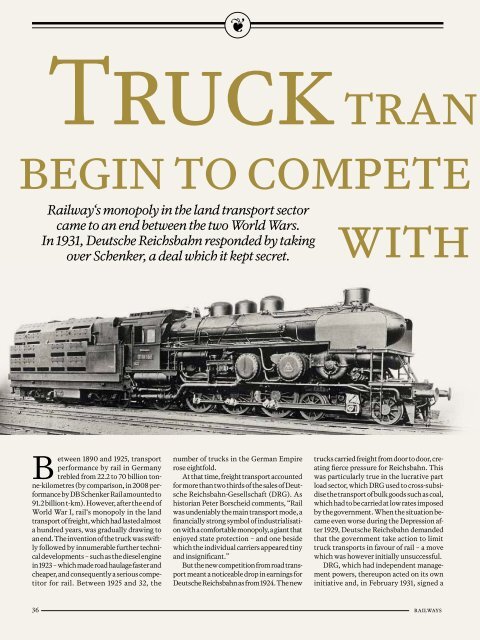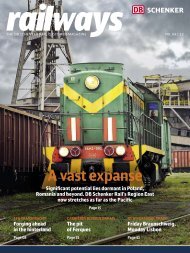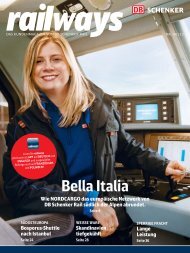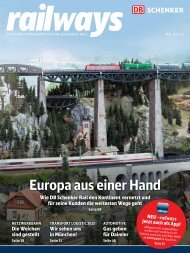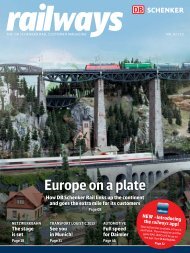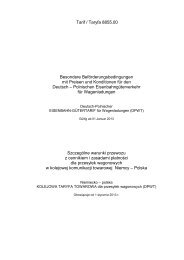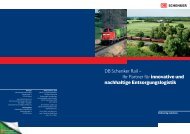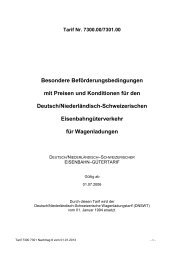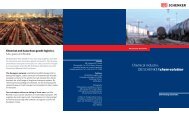PDF Download - DB Schenker Rail
PDF Download - DB Schenker Rail
PDF Download - DB Schenker Rail
You also want an ePaper? Increase the reach of your titles
YUMPU automatically turns print PDFs into web optimized ePapers that Google loves.
Truck tran<br />
begin to compete<br />
<strong>Rail</strong>way‘s monopoly in the land transport sector<br />
came to an end between the two World Wars.<br />
In 1931, Deutsche Reichsbahn responded by taking<br />
over <strong>Schenker</strong>, a deal which it kept secret.<br />
Between 1890 and 1925, transport<br />
performance by rail in Germany<br />
trebled from 22.2 to 70 billion tonne-kilometres<br />
(by comparison, in 2008 performance<br />
by <strong>DB</strong> <strong>Schenker</strong> <strong>Rail</strong> amounted to<br />
91.2 billion t-km). However, after the end of<br />
World War I, rail‘s monopoly in the land<br />
transport of freight, which had lasted almost<br />
a hundred years, was gradually drawing to<br />
an end. The invention of the truck was swiftly<br />
followed by innumerable further technical<br />
developments – such as the diesel engine<br />
in 1923 – which made road haulage faster and<br />
cheaper, and consequently a serious competitor<br />
for rail. Between 1925 and 32, the<br />
number of trucks in the German Empire<br />
rose eightfold.<br />
At that time, freight transport accounted<br />
for more than two thirds of the sales of Deutsche<br />
Reichsbahn-Gesellschaft (DRG). As<br />
historian Peter Borscheid comments, “<strong>Rail</strong><br />
was undeniably the main transport mode, a<br />
financially strong symbol of industrialisation<br />
with a comfortable monopoly, a giant that<br />
enjoyed state protection – and one beside<br />
which the individual carriers appeared tiny<br />
and insignificant.”<br />
But the new competition from road transport<br />
meant a noticeable drop in earnings for<br />
Deutsche Reichsbahn as from 1924. The new<br />
with<br />
trucks carried freight from door to door, creating<br />
fierce pressure for Reichsbahn. This<br />
was particularly true in the lucrative part<br />
load sector, which DRG used to cross-subsidise<br />
the transport of bulk goods such as coal,<br />
which had to be carried at low rates imposed<br />
by the government. When the situation became<br />
even worse during the Depression after<br />
1929, Deutsche Reichsbahn demanded<br />
that the government take action to limit<br />
truck transports in favour of rail – a move<br />
which was however initially unsuccessful.<br />
DRG, which had independent management<br />
powers, thereupon acted on its own<br />
initiative and, in February 1931, signed a<br />
36 railways


